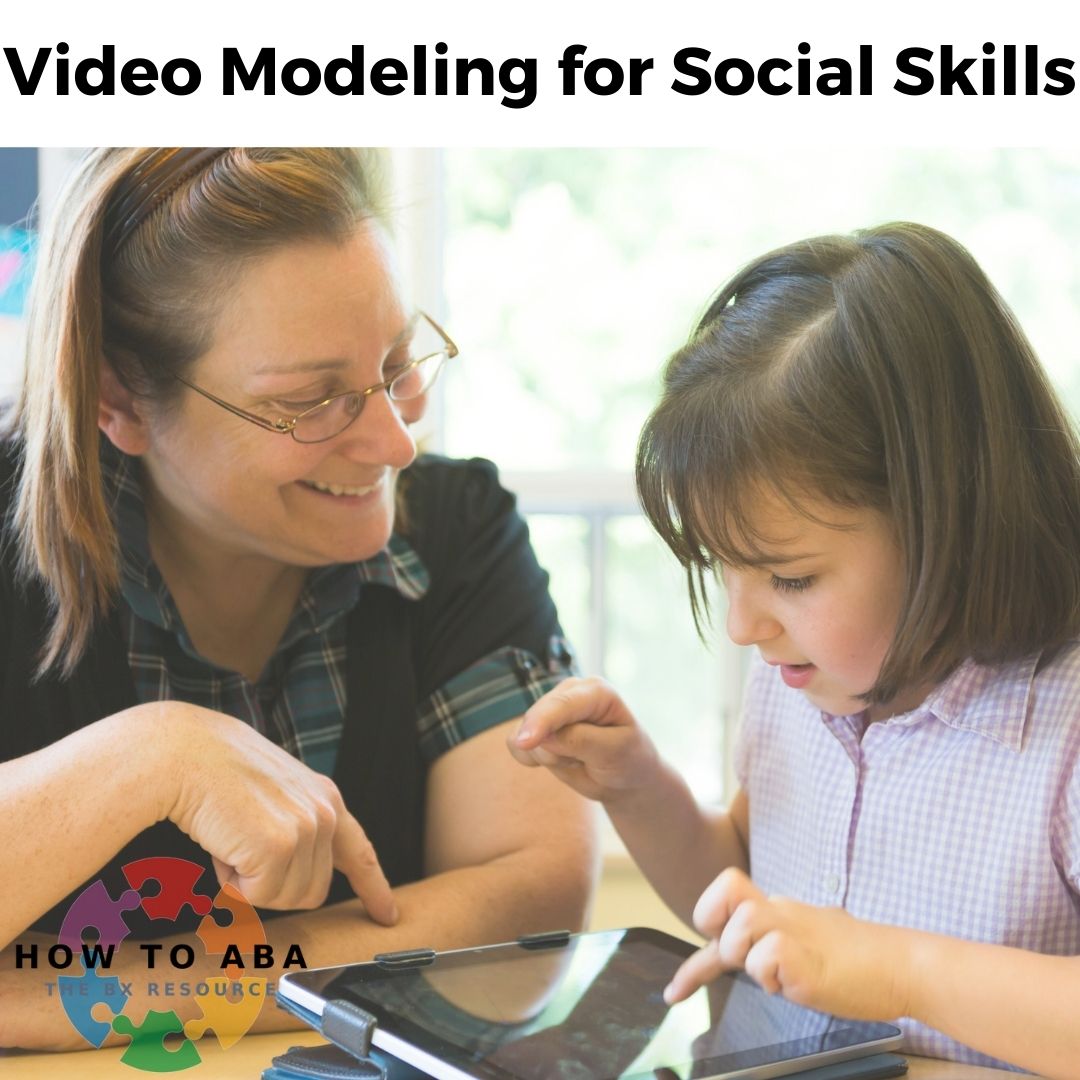
I am the type of person who likes to be prepared. In the pre-Covid era, when I went somewhere new, I liked to do my research: I checked out the website, looked at venue photos, found videos of the place, looked it up on maps and scrolled through street view. I found it calming to know what to expect in new situations.
What is Video Modeling
A video model is a type of prompt that can be used when an instruction is given to a learner. For a refresher on what video modeling is check out our previous post. Video modeling is a great tool that can be used to support teaching many skills, such as self-help skills (e.g., brushing teeth, getting dressed), school readiness skills (e.g., raising hand in class, lining up), and social skills (e.g., conversation, play routines).
Types of Video Models
There are many ways to use video modeling and teaching social and conversation skills is one of them! Although watching a video of a social interaction will not suffice for teaching social skills, it is a great tool to use as part of the program.
You can use resources like Model Me Kids or Everyday Speech that have great video modeling resources available. These can be used in conjunction with role play, discussion, practice, and feedback on the skill being taught.
Download our FREE Everyday Speech Program and Data Sheet,
plus go to our Using Video Modeling to Teach Skills post to download our Model Me Kids Data Sheet
The video model can be from a resource online (Model Me Kids, Everyday Speech, or videos on YouTube) that showcase unknown individuals in generalized situations. A video model can also be home made and feature familiar people such as family members and friends, instructor therapists, preferred characters or role models, or the learner themselves!
There are pros and cons to each video modeling source:
| Online Resource | ||
| Pro: You do not need to spend time reinventing the wheel; materials and resources are provided | Con: Not individualized to the learner, situation, or environment | |
| Home Made Resource | ||
| Pro: Individualized to the learner, situation, or environment | Con: Can take more time to create; may require multiple takes/editing; does not come with additional resource material |
If you choose to make your own video model featuring the learner, you can edit the video in short snippets to capture the strengths of the learner to focus on the skills you want to see more of in the future. For example, if it is a conversation between two people you can edit out any prompts or errors, so the learner can see a full social interaction starring themselves!
How to Use Video Modeling to Teach Social Skills
One method to incorporating video modeling into social skills learning would be to identify skill areas that need strengthening. Does the learner tell peers “I hope you lose” when playing board games, scream when play does not go their way, not respond when a peer asks for help, or become aggressive when someone is playing with a preferred item?
When you can identify an area that needs to be strengthened, you can watch a video model of a successful social interaction. When the video is over, it is a good time to role play and practice what happened – do this more than once!
Talk about what was successful in the interaction, how the characters felt, and what we can do in a similar situation. Then practice again using different items, environments, and people.
Example:
If a learner comments negatively to peers and engages in tantrum-behaviour when they lose a board game, you can watch a video model on losing.
Practice being both the winner and the loser, using different types of games, and with multiple people (instructor, peers, siblings, etc.).
During practice, you can talk about how you feel when someone comments negatively versus positively, have visuals (or other prompts) for appropriate comments to make, and provide lots of praise and reinforcement for working on such a tough social skill.


